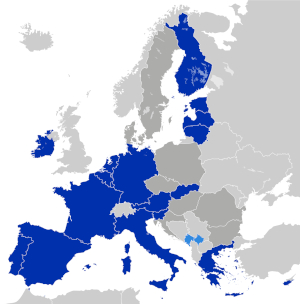
The ECB balance sheet has risen to 53.9% of GDP in July 2020. This compares to a 32% of the Federal Reserve and 33% of the Bank of England. This means a 1.78 trillion euro increase year-to-date. Furthermore, excess liquidity has soared to 2.9 trillion euro, a 1.2 trillion increase since January.
Added to this unprecedented monetary stimulus, the Eurozone has included a record-high 10% of GDP in various fiscal stimulus programmes. None of it has prevented the economy from showing signs of slowing down in August.
After a strong bounce in May and June, coming from the re-opening of most economies and the base effect, high frequency data compiled by Bloomberg Economics shows an evident slowdown in July and August. All economists that follow the eurozone economy are warning about the worrying weakening of leading indicators. The OECD has also published its July 2020 Leading Indicator Index which shows that economies like Spain are not just showing signs of weaker growth, but contraction. Italy continues to improve but at a slow pace, while France and Germany post declining growth levels.
The reason is evident. All the Eurozone monster stimulus is focused on perpetuating bloated government budgets and incentivising non-economic return or subsidized spending. The entire European Recovery Fund is clearly aimed at promoting white elephants disguised as green projects, but what is more concerning is that the Eurozone green deal includes more taxes and measures to prevent demand growth than productivity-enhancing plans.
This lesson should have been learnt in 2009. The European Union launched its massive Growth and Jobs Plan, which rose to more than 1.5% of the EU GDP, and the economy did not improve, while more than 4.5 million jobs were lost.
The problem of these massive stimulus is that they benefit the wrong parts of the economy. Current government spending in entitlements and subsidies, massive deficits and the corporations that take advantage of the massive private bond purchases and liquidity injections are the large multinationals and national champions that did not have any problem accessing markets in the past.
While the eurozone is raising “environmental” taxes to citizens and promoting subsidized spending in “the new green deal”, the biggest beneficiaries of the ECB corporate bond purchase programme are large automotive companies, oil and gas multinationals and big multi-utilities. The ECB has bought bonds from Shell, Eni, Repsol, OMV, Total, Siemens, Daimler AG, BMW, Volkswagen, Renault etc. None of these companies had any difficulty accessing capital markets or issuing debt at low rates, and their bonds could not be categorized in any way as cheap considering the yields and spreads. Most of these companies have established and mature businesses in sectors where overcapacity and margin challenges existed way before the previous and current crisis, so they will not increase hiring or capital spending due to the monetary stimulus.
Meanwhile, thousands of start-ups and small businesses with no access to credit because they have no hard assets are collapsing every month. The monster credit support coming from the transmission mechanism of monetary policy is hoarded by governments and multinationals. It is a massive incentive to overspend and malinvest. Governments feel happy adding more current spending and entitlements with no real economic return and traditional multinationals that were in slowdown phase years ago are zombified by low rates.
The ECB and Eurozone stimulus plans end up as massive subsidies to low productivity with collateral damages to high productivity sectors in the shape of higher taxes.
The reader may think that the same can be said about the United States and what the Federal Reserve does. Yes, to a certain extent. The main -and vital- difference is that the United States monetary policy transmission mechanism does not depend on the commercial bank channel. Less than 15% of the United States’ real economy is financed by the banking sector thanks to a diversified and flexible private credit system. In the Eurozone it is more than 80%, similar to Japan.
This path to long-term stagnation should serve as a reminder for the United States, again, of why it is not advisable to follow the eurozone policies. The results are invariably disastrous.
As usual a very educative piece. In a future issue you may expand on this:
“The main -and vital- difference is that the United States monetary policy transmission mechanism does not depend on the commercial bank channel. “
Yes, in the US less than 15% of the real economy is financed via the banking channel. Most of it is financed through private debt markets, diversified credit, funds and private equity. Thanks
Sir,
Aren’t the big corporate bond purchases off the banks balance sheets on already issued bonds, not to buy the bonds, but to attempt to reliquify the broke banks balance sheets.
ECB like the FED is just doing that, as they could care less about the big corporate entities. Also here in the U.S. they are buying the subprime corporate mortgages, known as junk bonds, for the same reason, to prevent the defaults from going on the banks balance sheets.
“The FED has ONLY one mandate, that is to insure the profits of the banks and to bail them out when they fail.”
The Euro-Zone was already in deep trouble before CoVid-19 hit, the weakness that started in 2017 never ended. The region simply isn’t competitive. In the fourth quarter even Germany narrowly escaped recession. France, Spain, and Italy are looking at continued large unemployment levels. Add to this the fact the EU lacks technological and intellectual property and is falling further behind China and the U.S.
Recently they started promoting a huge stimulus package. To fund the €750BN package, the EU would borrow on financial markets and put in place a suite of proposed new EU taxes and levies to pay back the debt over the coming decades. The article below delves into why if this goes forward it will achieve nothing.
https://brucewilds.blogspot.com/2020/06/eu-economy-traveling-along-same-worn.html